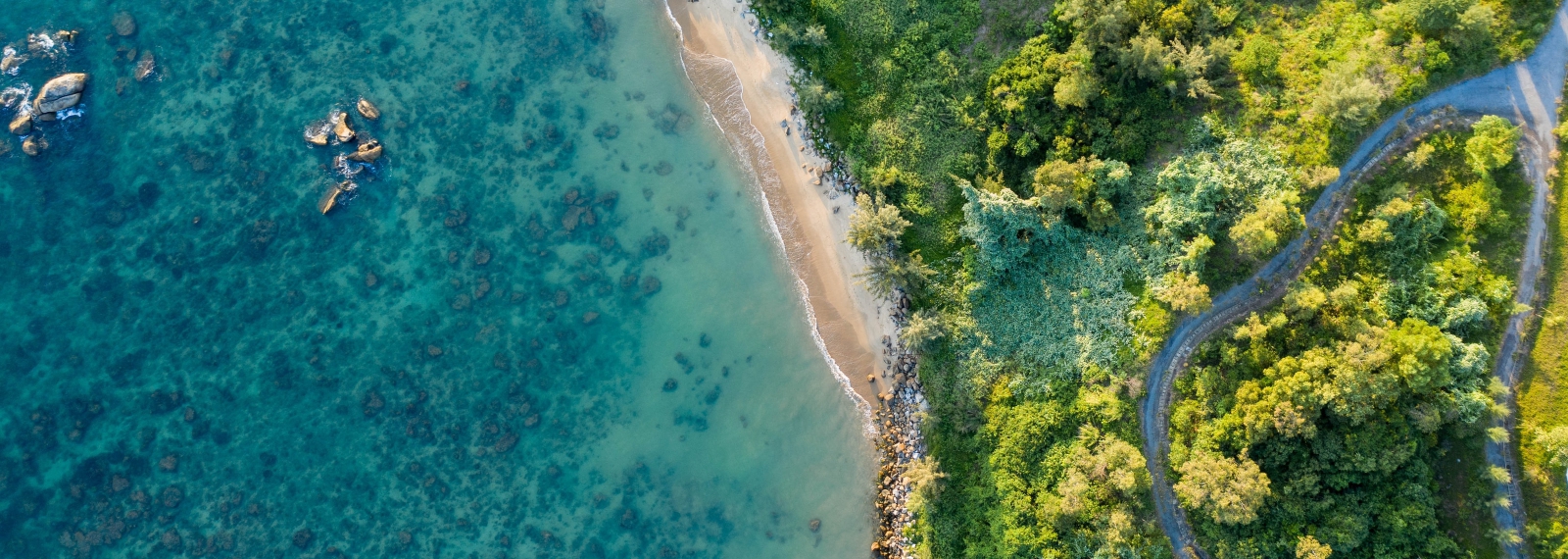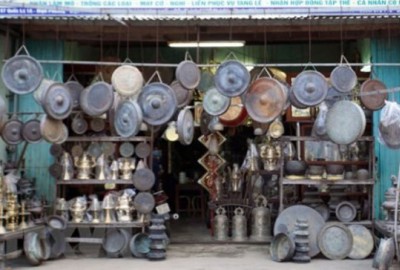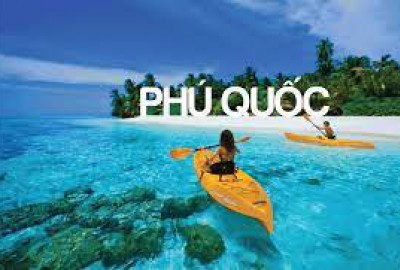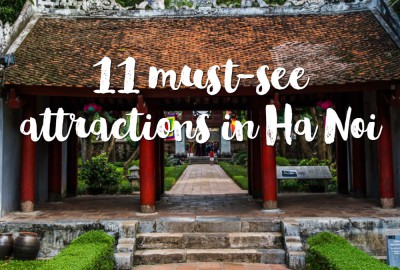4 memorable days in the Mekong Delta
The Mekong Delta is a vast and beautiful region of Vietnam, known for its tropical climate, tasty food and friendly people. Only two hours Ho Chi Minh City, you’ll find yourself immersed in rice paddies, coconut groves and mangrove forests. This lush area is one of Vietnam’s most alluring stops for nature and culture lovers. From mouthwatering noodle soups to ancient Khmer temples, this four-day itinerary covers the best of the Mekong Delta.
Day 1: Coconut groves and cycling in Ben Tre
Morning
Ben Tre is a province about two hours Ho Chi Minh City famous for its coconuts and tasty food. Cycling is a great way to explore in Ben Tre, and most hotels offer free bicycles for guests. Hop on and head out to the coconut groves for a morning of exploration.
Cycle past the Ben Tre Market and Ben Tre River on your way to the ferry dock. A short ferry ride brings you across to Cu Lao Long, one of Ben Tre’s many islets. Here you’ll find a network of tree-lined paths, shaded coconut groves and the occasional cafe. Stop for a sweet ca phe sua da to recharge.
If you have time, you may like to take a ferry to visit other islets in Ben Tre. Just carry your bicycle on board. Some islets have organised tours and activities, others such as those in Ham Luong River will give you an authentic look at local life in the Delta.
For lunch, tuck into Ben Tre’s delicious coconut-inspired dishes: creamy coconut rice, coconut-braised shrimp, and củ hủ dừa a light salad made with coconut hearts.
Afternoon
Lunch over, it's time to visit one of Ben Tre’s coconut candy factories. Ben Tre's soft, sticky coconut sweets are incredibly popular, not just in Vietnam, but all over the world. More than 300 coconut candy factories are found in this area. Take a tour of one of these factories to learn about the entire process of making coconut candy. Don’t leave without a taste of Ben Tre’s original coconut candy: a simple blend of coconut milk and sugar.
For dinner, you may like to track down a bowl of hủ tiếu. This Mekong Delta staple is a piping hot rice noodle soup, topped with pork, shrimp and a quail egg, and served with lime and fresh cilantro.
Day 2: Temples and small-town life in Tra Vinh
Morning
Take an early morning car or bus Ben Tre to the city of Tra Vinh. Considered one of the Delta’s prettier provinces, Tra Vinh is a maze of quiet, tree-lined streets, quaint houses and green rice paddies.
After checking in, go for a walk around Tra Vinh City, a beautiful mix of old and new. Tra Vinh’s wet market and the Long Binh river are still relatively untouched by recent growth. Take a stroll along the river to see fishermen pulling in their nets, and stroll through the market to admire the local produce, and pick up a snack of bánh tét trà cuôn a steamed sticky rice cake with a filling of banana or mung beans.
In the centre of the city, you’ll find bubble tea and coffee shops nestled between old-school sidewalk cafes some and tasty food stalls.
Stop in town for a lunch at any stall that catches your fancy. If you’re feeling adventurous, try bánh canh Bến Có: round rice noodles served in a clear broth with pork, liver and other nose-to-tail cuts.
Afternoon
Time for a bit of history. Tra Vinh is home to 140 ornate temples, built by Vietnam’s Khmer Krom ethnic group. About 31 percent of Tra Vinh’s population is ethnic Khmer, and their temples add a unique charm to this region.
Spend your afternoon at Kom Pong Chrai Pagoda (Hang Pagoda), 6km the city. This pagoda is known for its elaborate wooden sculptures carved by the resident monks. Scattered around the temple grounds, some of these incredible wooden pieces reach as high as the ceiling. If you wait until dusk, you may catch a flock of storks in flight.
One of the Delta’s prettier provinces, Tra Vinh is a maze of quiet, tree-lined streets, quaint houses and green rice paddies.
Finish the day with a hearty banh mi Tra Vinh’s sellers. If you’re feeling brave, the local favourite bánh mì phá lấu is chock-full of intriguing meats, served with a rich, sweet sauce. After dinner, stop at a cafe along Pham Ngu Lao to soak up the evening air, or join the families walking in Deja Vu Huynh Kha Eco Park.
Day 3: Legendary lakes and Can Tho City
Morning
You can’t leave Tra Vinh without visiting Ao Ba Om, a square, man-made lake enveloped by tall trees, picnic grounds and coffee stalls. Legend has it that the lake was dug hundreds of years ago by a team of Khmer women in a contest to gain the right to select their own husbands.
Today, Ba Om is a serene expanse of lotus flowers and dragonflies. Take a seat in a plastic armchair and watch the world go by with an ice-cold ca phe sua da in hand. Afterward, stop by Ang Pagoda one of Tra Vinh’s most impressive Khmer structures and the Khmer Cultural Museum across the street for a deeper look at Khmer Krom culture and history.
Come lunchtime, go in search of a famous Tra Vinh delicacy, bún nước lèo. This tasty rice noodle soup comes with a flavoursome broth made freshwater fish, herbs and shredded banana flower. Order fried spring rolls and steamed pork on the side for a real local lunch.
Afternoon
Transfer by car or bus to Can Tho province, about three hours away. Can Tho is firmly on the tourist map and there are plenty of things to do. When you arrive, take a stroll around Can Tho town. Stop at Ong Pagoda, built at the end of the 19th century by Chinese descendants. Inside you’ll find a dimly lit entrance hall and a haze of spicy smoke. Conical coils of burning incense hang the rafters and the whole temple is decked in a deep red.
For dinner, find your way to one of the many restaurants in downtown Can Tho for fresh seafood and solid, family-style Mekong cooking. Try can chua, a hot and sour soup native to the region, made with fish or shrimp, pineapple, tomato, sprouts, and elephant ear stems. Before turning in, book a boat tour for the following morning.
Day 4: Floating markets and sampan rides
Morning
Start your last day in the Mekong Delta at the Cai Rang floating market. The largest wholesale floating market in the Delta runs early morning to midday. Rise at 5am for the 30 minute ride Can Tho to Cai Rang, where the river begins to fill with broad, wooden boats stacked with fruit and vegetables.
Hawkers hang samples of their wares long poles at the front of their boats, so customers know what they’re selling. Smaller boats weave in and out between the bigger vessels, selling breakfast noodles and coffee. After the floating market, continue your morning on the river, cruising small tributaries for a glimpse of local life.
Back in Can Tho, look for a lunch of nem nướng Cái Răng. These skewers of lean pork meat are grilled over charcoal and served with peanut sauce, herbs, pickles, and bánh hỏi: tiny vermicelli noodles woven into delicate bundles and topped with sauteed garlic.
Afternoon
Spend a lazy afternoon discovering Can Tho town, buying souvenirs and wandering the bustling promenade of Ninh Kieu Park. For your final evening in the Delta, spring for a classy dinner cruise.
TransMekong’s Mystic Sampan will take you on a gentle river ride around the edge of Can Tho city. Admire the city lights, as you dine on Vietnamese mango salad, grilled sea bass, chicken with lemongrass and other freshly prepared delights a perfect end to your Mekong adventure.
Tips for getting around the Mekong Delta
Chartered Bus: If you are going deep into the Delta, you can book online with a commercial bus company. A ticket to Ben Tre with the Thao Chau Express costs VND70,000/person.
Local Bus: Local buses connect most Mekong Delta provinces with each other and with Mien Tay Bus Station in Ho Chi Minh City. The prices of these buses are cheaper than chartered buses.
Taxi: Taxis and xe oms (motorcycle taxis) are available in the Mekong Delta. Check the metre when you get into a taxi and be sure to bargain before getting on a xe om.
Bicycle: Cycling can be a great way to get around the Mekong Delta. Ask your hotel about rentals in the area.
Motorbike: Motorbike tours are a great way to see more of the Mekong Delta. Be sure to wear a quality helmet and look out for passing trucks.
(Source: Vietnam National Administration of Tourism)










 Chia sẻ:
Chia sẻ:








